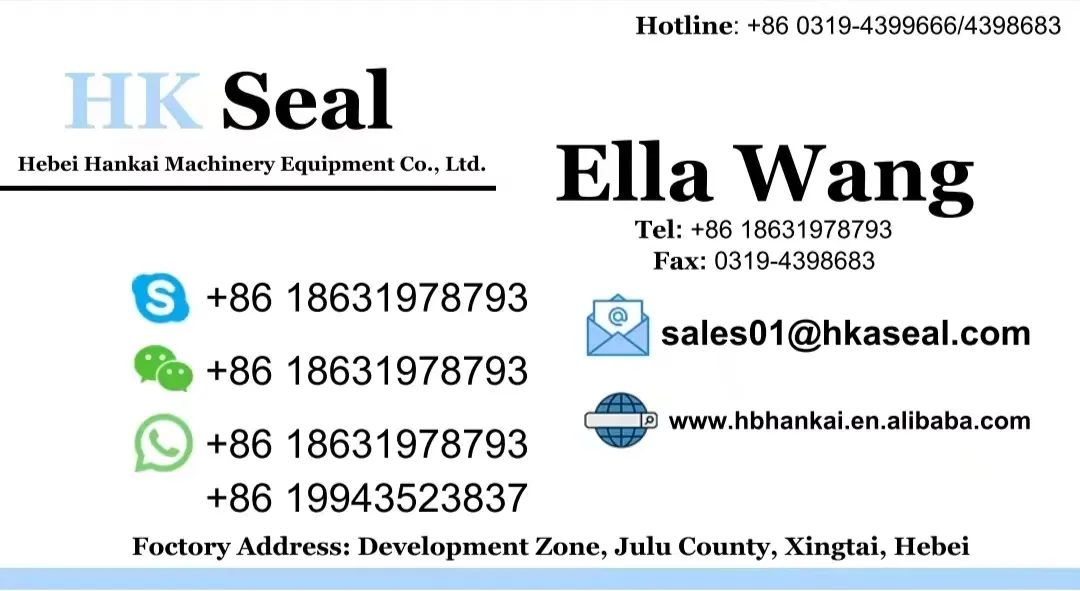pro . 16, 2024 22:28 Back to list
seal kit hydraulic
Understanding Seal Kit Hydraulics Essential Components for Fluid Power Systems
Hydraulic systems are integral to a myriad of applications, ranging from industrial machines to automotive technologies. At the heart of these systems lies the seal kit, an often overlooked yet crucial component that ensures efficiency and reliability. This article delves into the significance and functionality of seal kit hydraulics, detailing their role in maintaining optimal system performance.
What is a Seal Kit in Hydraulic Systems?
A seal kit comprises a collection of seals, O-rings, and sometimes other components designed to prevent hydraulic fluid from leaking and to keep contaminants from entering the system. These kits are tailored to specific equipment and applications, featuring parts that vary in size, material, and design based on the operational demands of the hydraulic system they serve.
The Function of Seals in Hydraulics
Seals perform vital functions in hydraulic systems. Primarily, they
1. Prevent Leakage In hydraulic systems, fluid pressure is crucial for operation. Any leaks can lead to decreased performance, increased wear on components, and potential system failure. Seals effectively contain hydraulic fluid, ensuring the system maintains the necessary pressure.
2. Protect Against Contamination Hydraulic fluids must remain uncontaminated to function correctly. Contaminants such as dirt, dust, and moisture can lead to abrasive wear, reducing the lifespan of hydraulic components. Seals act as barriers, preventing these contaminants from entering the system.
3. Support Mechanical Movement Seals facilitate the movement of various components, such as pistons and cylinders, while reducing friction. This is particularly important in hydraulic cylinders where precision and efficiency are paramount.
Types of Seals in Hydraulic Seal Kits
Several types of seals are typically included in hydraulic seal kits, each serving a unique purpose
1. O-Rings These circular seals are commonly used to create a tight seal between two or more components. They are versatile and can be used in various configurations, making them a staple in hydraulic systems.
seal kit hydraulic

2. U-Cups and V-Rings U-cup seals are designed to retain fluid in a cylinder under pressure. They are especially useful because of their low friction characteristics. V-rings, on the other hand, are used primarily for rod sealing applications, providing a reliable barrier against fluid escape.
3. Backup Rings These are used in conjunction with O-rings to prevent extrusion under high-pressure conditions. They add an extra layer of protection, extending the life of the O-ring and improving sealing reliability.
4. Flat Gaskets Used to seal joints in hydraulic systems, flat gaskets can fill spaces between two surfaces, creating a leak-proof seal.
Choosing the Right Seal Kit
Selecting the correct seal kit for your hydraulic system is paramount. Factors to consider include
- Compatibility The materials used in the seal should be compatible with the hydraulic fluid and operating environment. Common materials include nitrile rubber, Viton, and polyurethane, each offering distinct advantages based on temperature and chemical exposure.
- Pressure and Temperature Ratings Ensure that the seals can withstand the maximum expected pressures and temperatures within the system.
- Application Requirements Different applications may impose specific demands that necessitate specialized seal designs or materials. Always consult manufacturer specifications to ensure optimal performance.
Maintenance and Replacement
Regular maintenance of hydraulic systems is crucial to ensure the longevity of seal kits. Inspect seals for signs of wear, such as roughness, cracks, or deformation, as these can compromise performance. Replacing worn seals promptly can prevent costly downtime and repairs.
Conclusion
In conclusion, seal kits are fundamental to the efficiency and reliability of hydraulic systems. Proper understanding of their functions, types, and maintenance requirements can significantly enhance the performance of hydraulic machinery. By prioritizing the selection and upkeep of seal kits, operators can ensure their systems remain robust and operational, ultimately leading to improved productivity and reduced overhead costs in their operations. Whether you're working in industrial settings or maintaining automotive systems, a well-functioning seal kit is your ally in achieving hydraulic excellence.
-
The Trans-formative Journey of Wheel Hub Oil Seals
NewsJun.06,2025
-
Graphene-Enhanced Oil Seals: Revolutionizing High-Pressure Oil Sealing
NewsJun.06,2025
-
Future of Hydraulic Sealing: Advanced Intelligent TCN Oil Seals
NewsJun.06,2025
-
Don’t Let a Broken TCV Oil Seal Ruin Your Day
NewsJun.06,2025
-
Bio-Inspired Dust Seals for Better Sealing Performance
NewsJun.06,2025
-
Biodegradable and Sustainable Hydraulic Seal Materials
NewsJun.06,2025
-
Top Oil Seal Solutions for Your Industrial Needs
NewsMay.22,2025
Products categories
















